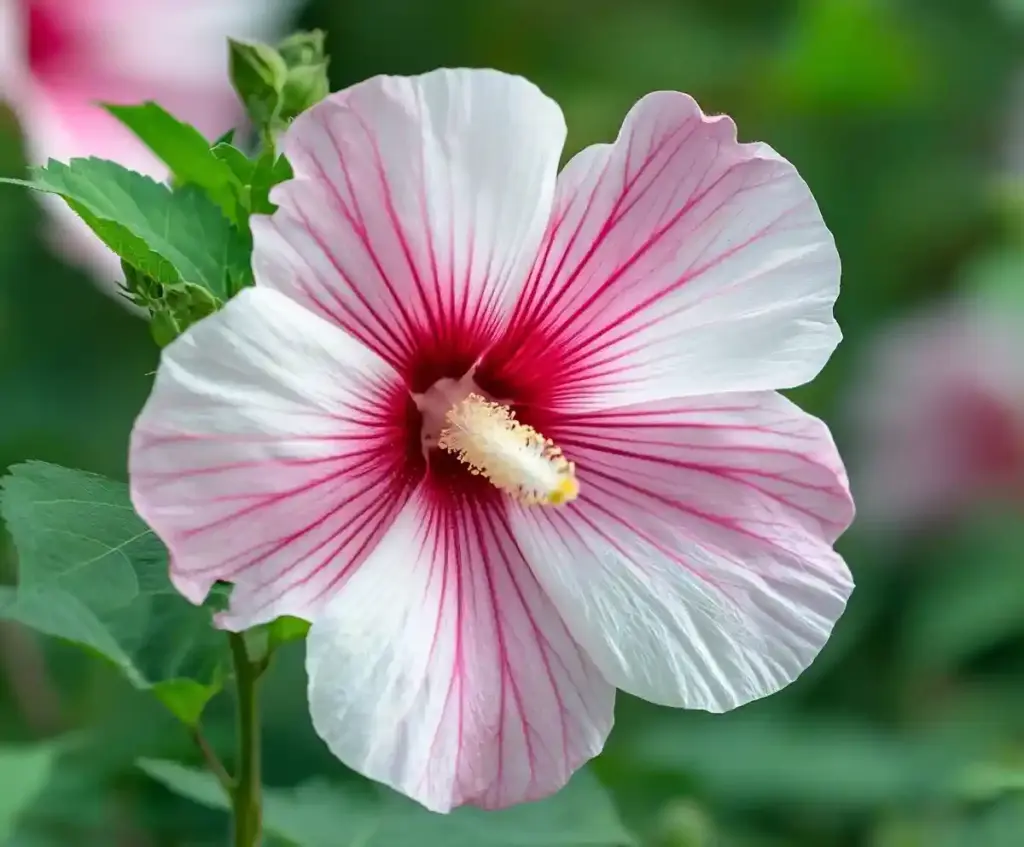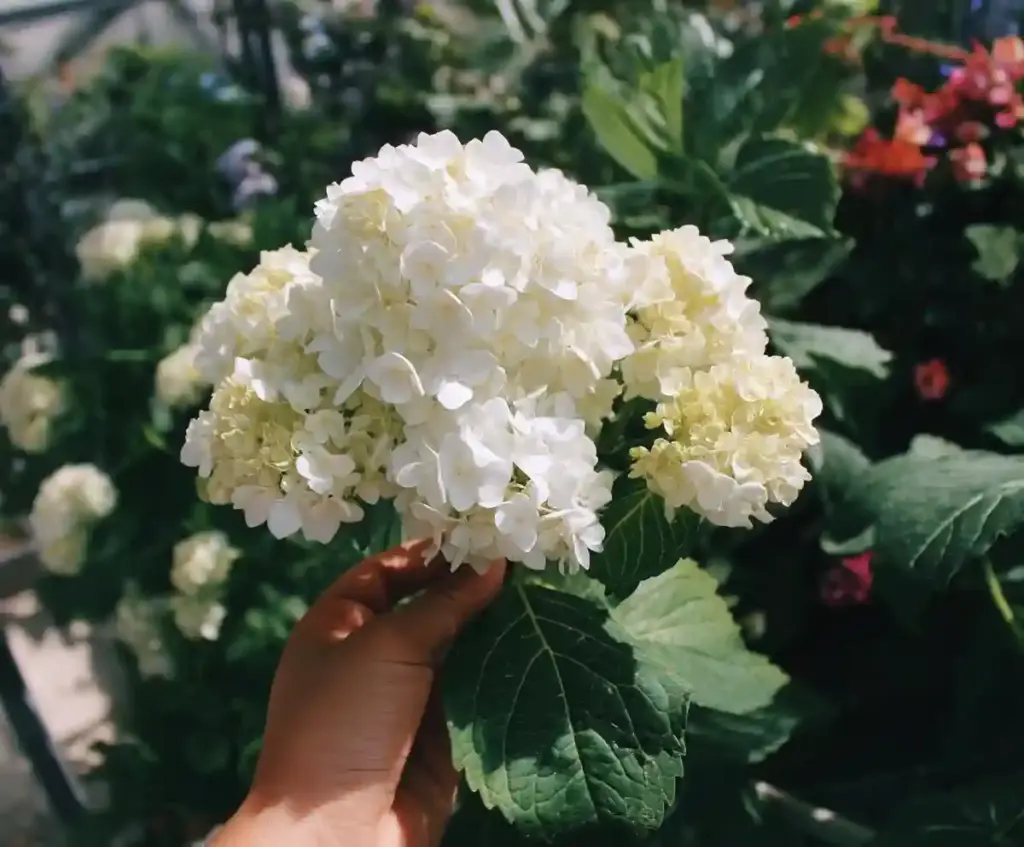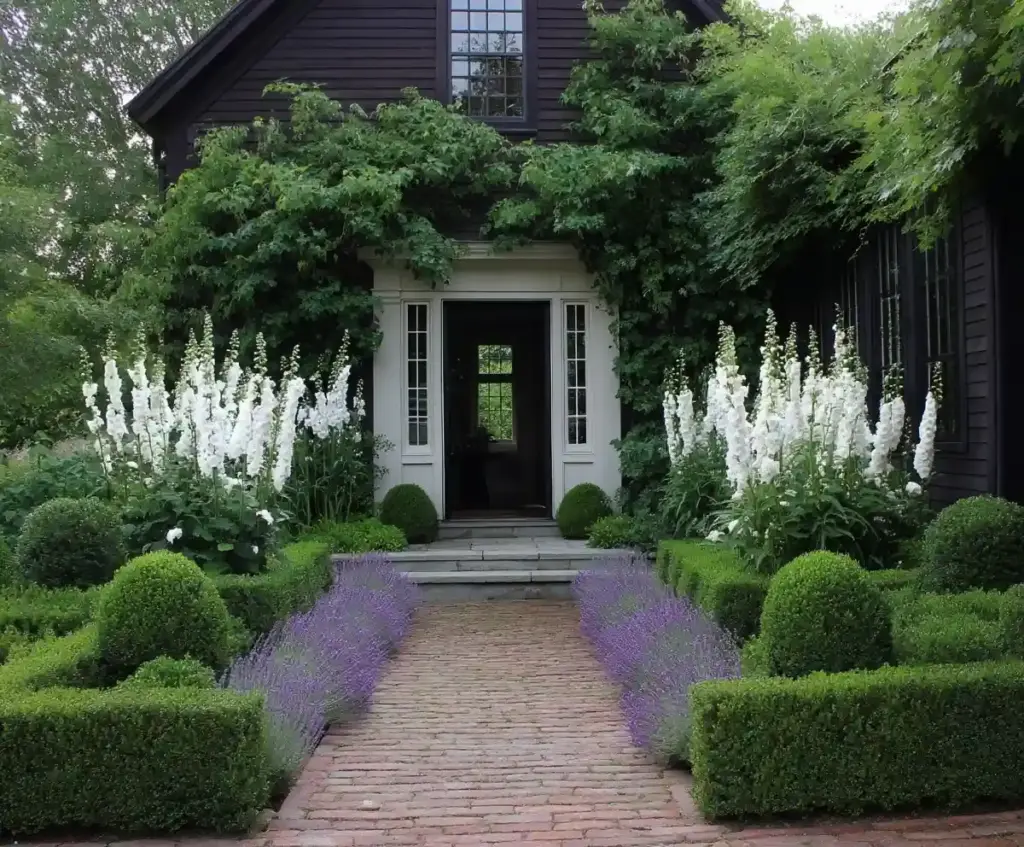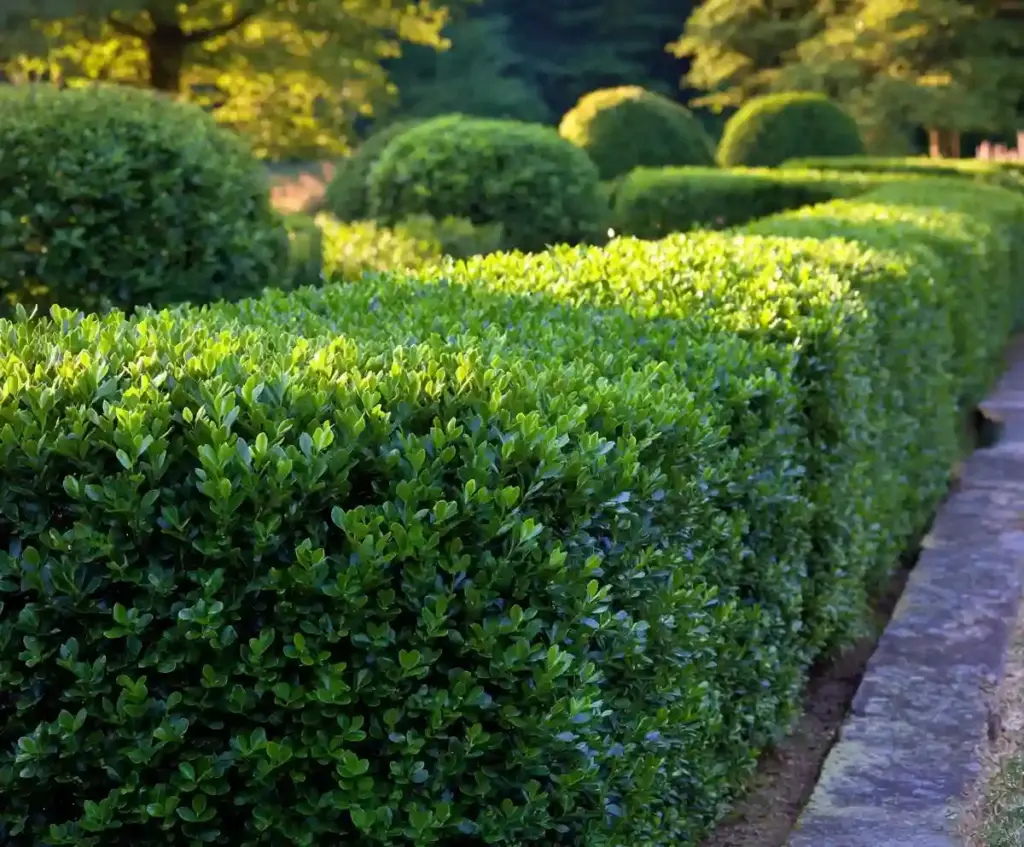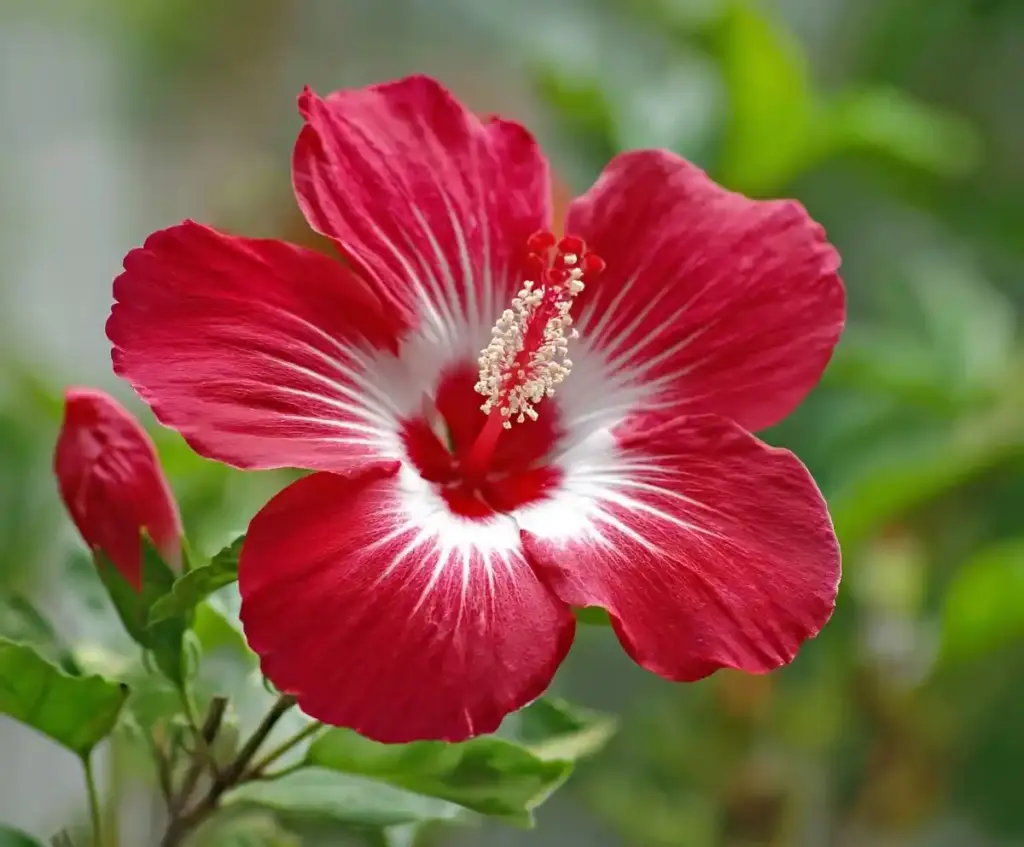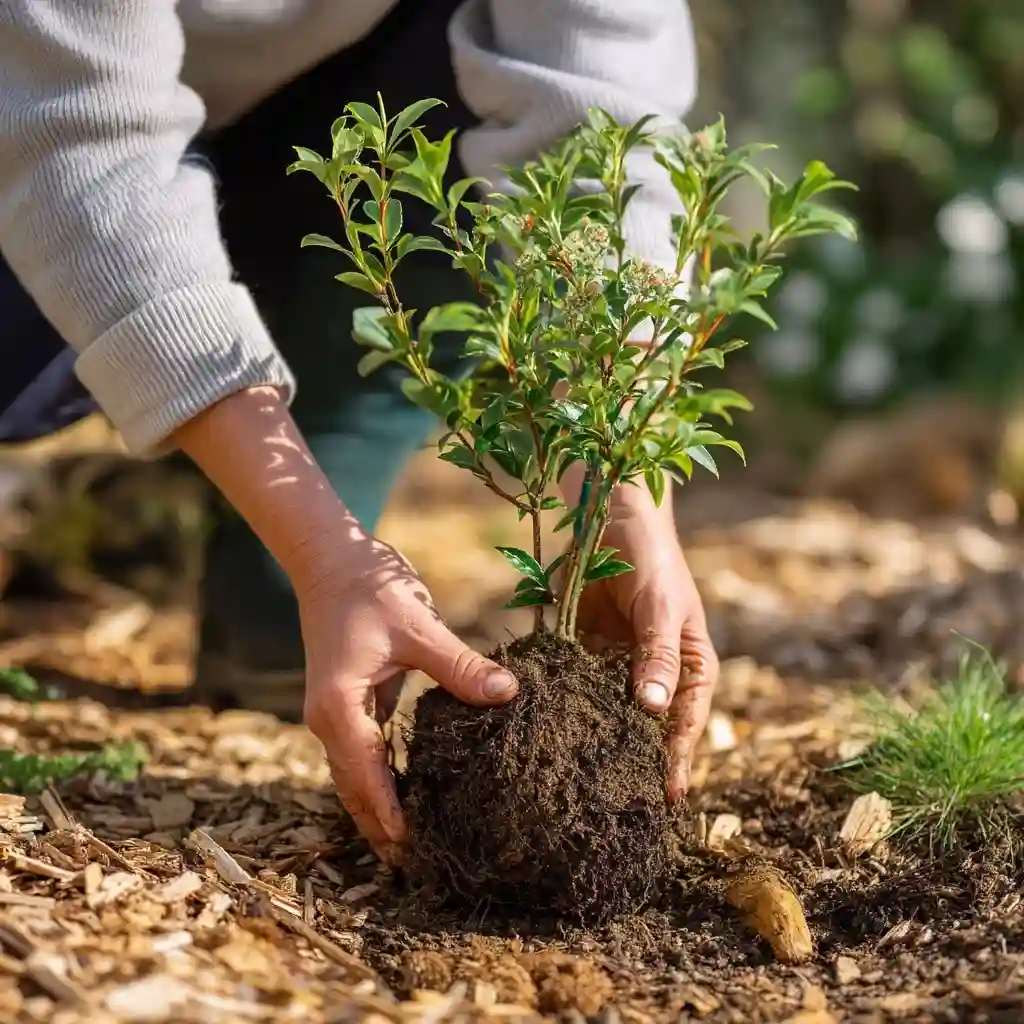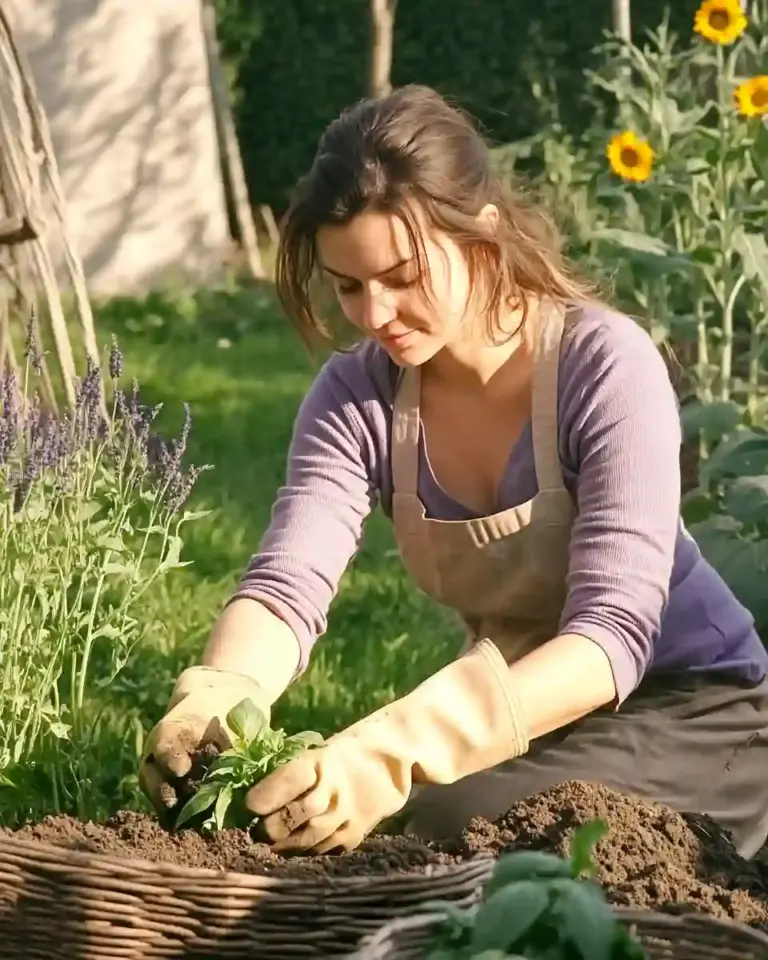Grow crepe myrtle trees if you want months of colorful blooms and a low‑maintenance addition to your garden. These resilient trees thrive in sunny spots, producing clusters of pink, white, or purple flowers that brighten yards from late spring through fall. Whether you choose a compact dwarf variety for a small border or a tall tree that can reach 20 feet, crepe myrtles reward gardeners with beauty and durability, even in hot, humid summers.
Table of Contents
How to Plant Crepe Myrtle Trees
Planting crepe myrtle trees correctly is the first step to enjoying healthy growth and vibrant blooms for years to come. Choose a sunny location that receives at least six hours of direct sunlight each day—these trees love the heat and will bloom best with plenty of sun.
The soil should be well‑drained and slightly acidic, ideally with a pH between 5.0 and 6.5. Avoid low spots in your yard where water might pool, as standing water can damage the roots. A slightly elevated planting area is ideal.
When you’re ready to plant:
- Prepare the hole – Dig a hole twice as wide as the root ball but only as deep as the container.
- Remove the tree from the pot – Gently loosen the root ball without breaking it apart.
- Set the tree in place – Keep the top of the root ball just slightly above the soil surface rather than burying it deep.
- Backfill with soil – Firmly pack the soil around the roots to remove air pockets.
- Water thoroughly – Give the tree a deep drink to help settle the soil and establish the roots.
Adding a 2‑inch layer of mulch around the base will help retain moisture, regulate soil temperature, and reduce weeds—but keep mulch a few inches away from the trunk to prevent rot.
How to Water Crepe Myrtles
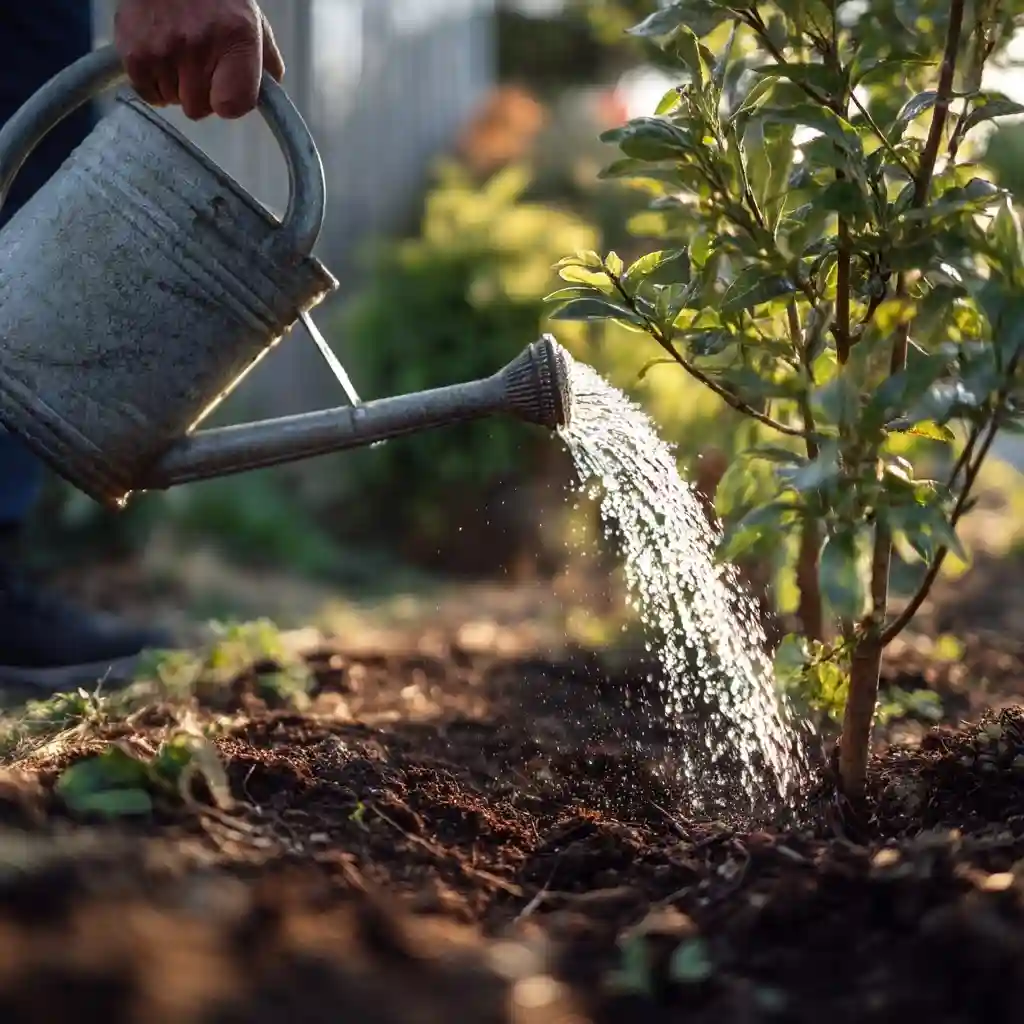
Once your crepe myrtle is in the ground, proper watering is key to helping it thrive. Newly planted trees need consistent moisture to establish a strong root system. For the first few weeks, water deeply once or twice a week, ensuring the soil stays evenly moist but never soggy.
During hot summer months, check the soil regularly. If the top two inches feel dry, it’s time to water. A slow, deep soak at the base of the tree is better than frequent light watering because it encourages roots to grow deeper into the soil.
Additional tips for healthy watering:
- Morning watering is best to reduce evaporation and prevent fungal issues.
- Reduce watering in fall and winter as the tree enters dormancy.
- Use mulch to keep moisture in the soil longer, especially during heat waves.
Once established, crepe myrtles are fairly drought‑tolerant, making them a low‑maintenance choice for sunny landscapes.
Pruning Crepe Myrtles
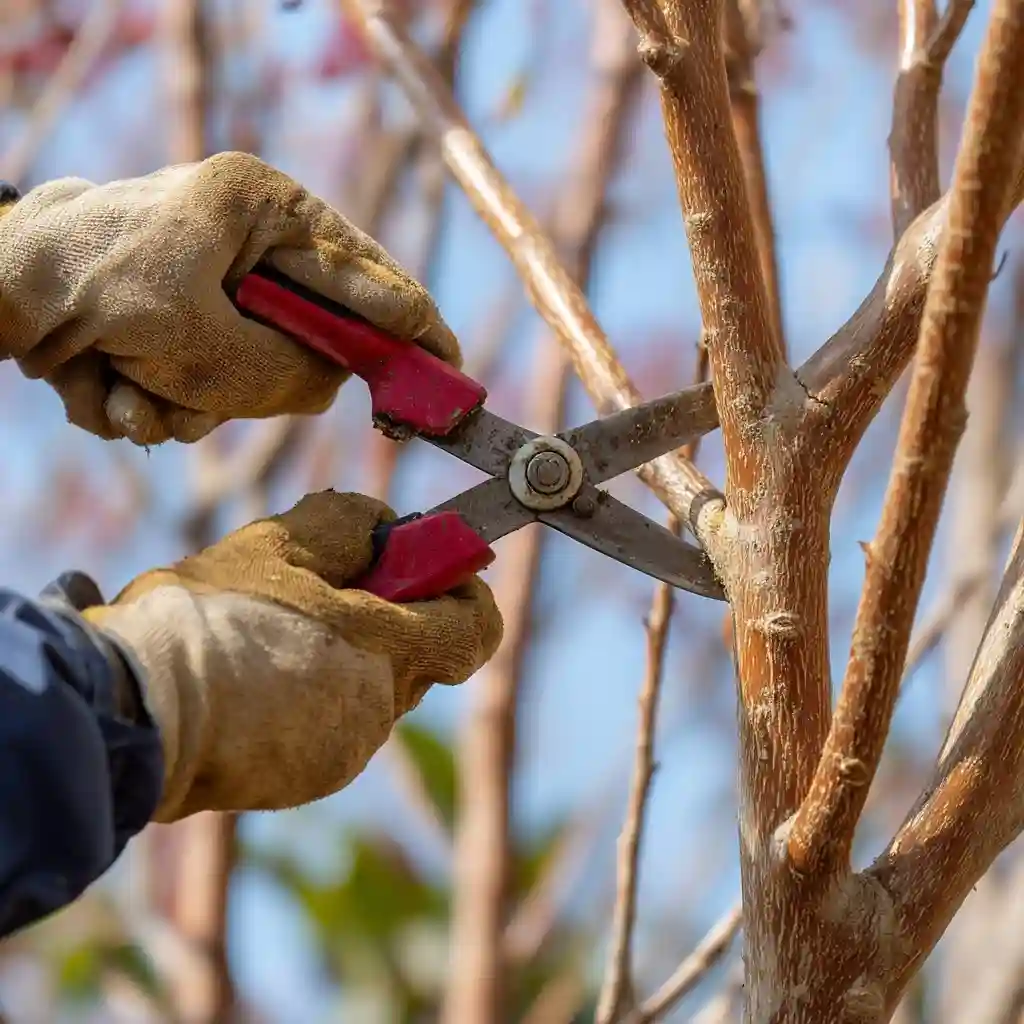
Pruning crepe myrtle trees the right way ensures healthy growth and abundant blooms. These trees bloom on new wood, so proper timing and technique make all the difference.
When to prune:
- Late winter to very early spring is ideal.
- Avoid pruning in fall, as it can expose the tree to winter damage.
How to prune correctly:
- Remove suckers – Cut away any shoots growing from the base of the tree.
- Eliminate crossing or rubbing branches – This improves airflow and prevents damage.
- Trim dead or weak wood – Removing unhealthy growth allows the tree to focus energy on flowering.
- Lightly shape the canopy – Only shorten tall branches if needed, but avoid cutting too aggressively.
⚠️ Important: Do not “top” crepe myrtles by cutting all branches back to stubs. This weakens the tree and reduces its ability to produce strong, flower‑bearing branches.
Deadheading spent flower clusters during summer can encourage a second flush of blooms, keeping your tree colorful for longer.
Conclusion
Learning how to grow crepe myrtle trees can transform your yard into a vibrant, low‑maintenance landscape. With the right planting spot, consistent watering in the early weeks, and light pruning in late winter, these resilient trees will reward you with months of colorful blooms year after year. Whether you choose a towering variety for shade or a compact dwarf for garden borders, crepe myrtles are a dependable way to add long‑lasting beauty to your outdoor space.
FAQs About Growing Crepe Myrtle Trees
1. When is the best time to plant crepe myrtles?
Plant in early spring or fall, before the first frost. Potted, blooming trees can be planted in late spring or early summer.
2. How often should I water my crepe myrtle tree?
Water deeply once or twice a week during the first few weeks, then reduce once the tree is established.
3. Do crepe myrtles need fertilizer?
Yes, applying a high‑nitrogen fertilizer in early spring can boost growth and blooms, but avoid over‑fertilizing.
4. Should I prune my crepe myrtle every year?
Light annual pruning in late winter keeps the tree healthy and encourages more blooms. Avoid heavy “topping,” which weakens the tree.
5. How tall can crepe myrtle trees grow?
Tree varieties can reach 15–20 feet, while dwarf varieties stay 1–2 feet tall, perfect for small gardens or borders.
🌿 Love gardening inspiration? Follow me on Pinterest for bold plant ideas, tips, and seasonal color!
More Posts
